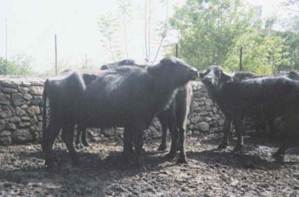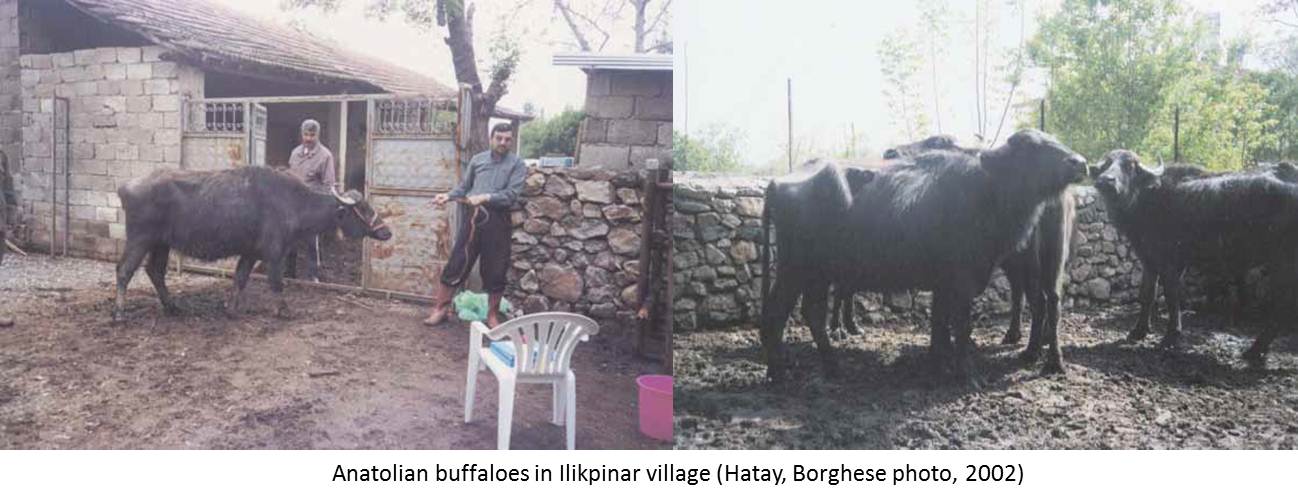Anatolian
The Anatolian buffalo has been raised in Turkey for centuries, originating from Indian migration (7th Century), together with the expansion of Islam.
Population size: 110 000
Description: Black in colour, long hair, with variation in tail length and frequent white switch.

Height at withers of adult male is 138 cm; body weight is 200-500 kg.
Height at withers of adult female is 138 cm; body weight is 200-500 kg.
Distribution: Concentrated in the Black Sea region, North of Middle Anatolia, Thrace, Hatay, Mus, Kars, Dyarbakir, Afyon, and Sivas.
Husbandry: In dairy farms, housing differs from region to region. If grazing is available, the three to five buffaloes owned by the family are taken to graze together with the other buffaloes from the village. Mating and calving occur at the pasture. Generally on the ground floor of each house there are barns to keep the buffaloes in winter. The barns have no windows and the doors are tightly closed. Young animals are never taken outdoors in winter in the cold climates. Buffaloes are slaughtered together with cattle. Milking is done by hand except at the two existing research stations. Average slaughter weight is 300-350 kg, at the age of 18-20 months. Carcass yield is 53-55 percent. Overall growth rate is 400 g/day
Lactation duration : 220-270 days
Milk yield: 700-1 000 kg
Milk fat: 6.6-8.1 percent
Milk protein: 4.2-4.6 percent
Products: a semi-hard cheese called “peyaz peyneri” is made from buffalo milk. Ayran is a drink with water and buffalo yoghurt. Buffaloes are raised for milk production only as source of income that does not require any expenditure, i.e. in the areas that have natural feeding conditions. The price of buffalo milk is only slightly higher than the price for cows’ milk. Meat production is all converted into sausages. The price of buffalo meat is 10 percent less than the price for beef.
Sources: Sekerden et al., 1996a, b; Sekerden et al., 2000, Borghese, 2005

